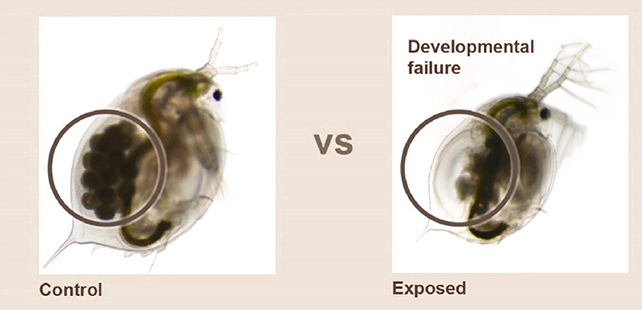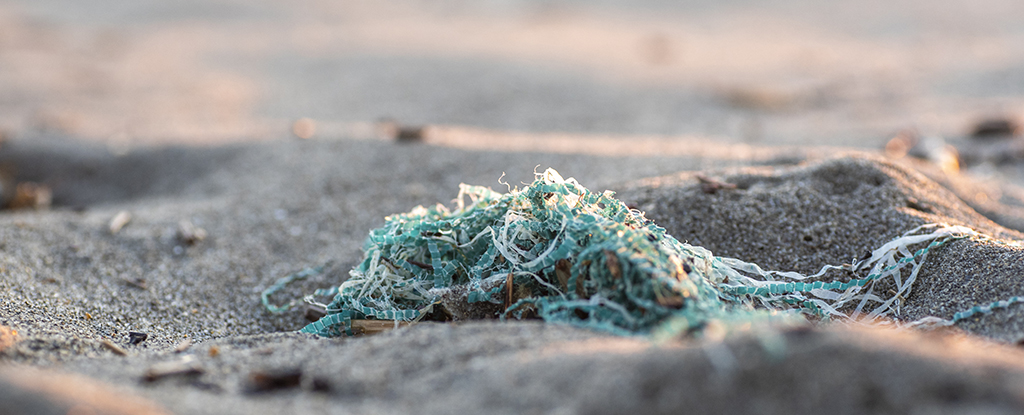Products You May Like
Microplastics and persistant materials known as ‘forever chemicals‘ are two of our most concerning modern pollution problems. Now new research has shown how their impact on the environment drastically increases when combined.
A team from the University of Birmingham in the UK looked at the effects of microplastics and PFAS (per- and polyfluoroalkyl substances) on Daphnia magna water fleas, both separately and mixed together.
Exposing Daphnia to both pollutants together under laboratory conditions caused up to 41 percent more damage to the water fleas than the plastics and forever chemicals did separately.
That effects included stunted growth, delayed sexual maturity, and fewer offspring, with the severity of harm greater in tests on water fleas that had previously been exposed to other chemical pollution, suggesting a cumulative effect.

“It is imperative that we investigate the combined impacts of pollutants on wildlife throughout their lifecycle to get a better understanding of the risk posed by these pollutants under real-life conditions,” says environmental scientist Mohamed Abdallah.
“This is crucial to drive conservation efforts and inform policy on facing the growing threat of emerging contaminants such as forever chemicals.”
Microplastics are fragments of plastic less than 5 millimeters (0.2 inches) across, which accumulate in the environment as a result of the break-up of larger materials or the shedding of synthetic fibres.
Though the extent of their effects on ecosystems and human health isn’t fully known, research suggests there is good reason to be concerned as they increasingly spread, both into the most remote spots on Earth and deep inside our own bodies.
PFAS, meanwhile, are used in a multitude of manufacturing processes for their fire-suppressing qualities, and have been linked to kidney damage and cancer growth. Slow to break down, these pollutants have been found in wildlife and falling rain – as ubiquitous in our environment as microplastics.
The study was designed to simulate D. magna’s potential exposure to both of these toxins in the natural world. These water fleas are a key part of the aquatic food chain, as well as a useful indicator of environmental pollution.
“Our research paves the way for future studies on how PFAS chemicals affect gene function, providing crucial insights into their long-term biological impacts,” says evolutionary systems biologist Luisa Orsini.
Identifying the impact of individual pollutants is challenging, let alone deciphering their impact on the environment when combined. With improvements in analytical methods and technology, the researchers hope we can better quantify the harm caused by numerous pollutants under more complex circumstances.
“These findings will be relevant not only to aquatic species but also to humans, highlighting the urgent need for regulatory frameworks that address the unintended combinations of pollutants in the environment,” says Orsini.
“Understanding the chronic, long-term effects of chemical mixtures is crucial, especially when considering that previous exposures to other chemicals and environmental threats may weaken organisms’ ability to tolerate novel chemical pollution.”
The research has been published in Environmental Pollution.
